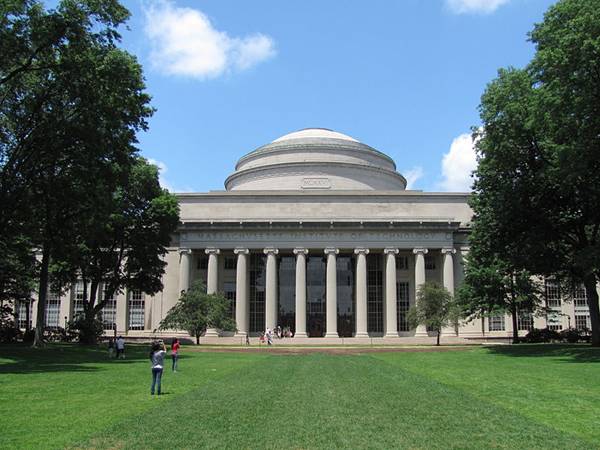01. University of Chicago
The University of Chicago was created and incorporated as a coeducational, secular institution in 1890 by the American Baptist Education Society and a donation from oil magnate and philanthropist John D. Rockefeller on land donated by Marshall Field. The University of Chicago also maintains facilities apart from its main campus. The University’s Booth School of Business maintains campuses in Singapore, London, and the downtown Streeterville neighborhood of Chicago. The Center in Paris, a campus located on the left bank of the Seine in Paris, hosts various undergraduate and graduate study programs.
09 more Universities after the break...
02. Harvard University
Harvard University is an American private Ivy League research university located in Cambridge, Massachusetts, United States, established in 1636 by the Massachusetts legislature. Harvard is the oldest institution of higher learning in the United States and the first corporation chartered in the country. Harvard has an intense athletic rivalry with Yale University traditionally culminating in The Game, although the Harvard–Yale Regatta predates the football game. This rivalry, though, is put aside every two years when the Harvard and Yale Track and Field teams come together to compete against a combined Oxford University and Cambridge University team, a competition that is the oldest continuous international amateur competition in the world.
03. Northwestern University
Northwestern has one of the top ten university endowments in the United States. One of only 62 institutions elected to the Association of American Universities, Northwestern was awarded more than $500 million in research grants in 2010–2011, placing it in the first tier of the top research universities in the United States by the Center for Measuring University Performance. In Fall 2008, Northwestern opened a campus in Education City, Doha, Qatar, joining five other American universities: Carnegie Mellon University, Cornell University, Georgetown University, Texas A&M University, and Virginia Commonwealth University.
04. University of Pennsylvania
The University of Pennsylvania is a private, Ivy League university located in Philadelphia, Pennsylvania, United States. Penn is the fourth-oldest institution of higher education in the United States, and considers itself to be the first university in the United States with both undergraduate and graduate studies. Penn is consistently included among the top five research universities in the US, and among the top research universities in the world, both in terms of quality and quantity of research.
05. University of Michigan
The University of Michigan is a public research university located in Ann Arbor, Michigan in the United States. It is the state’s oldest university and the flagship campus of the University of Michigan. U-M also has satellite campuses in Flint and Dearborn. Michigan has one of the world’s largest living alumni groups at 460,000 in 2007. U-M owns the University of Michigan Health System and has one of the largest research expenditures of any American university, passing the $1.24 billion mark during the 2010-2011 academic year.
06. Stanford University
Stanford University or Stanford, is an American private research university located in Stanford, California on an 8,180-acre campus near Palo Alto, California, United States. The university is organized into seven schools including academic schools of Humanities and Sciences and Earth Sciences as well as professional schools of Business, Education, Engineering, Law, and Medicine. Stanford has a student body of approximately 6,988 undergraduate and 8,400 graduate students.
07. Columbia University
The university was founded in 1754 as King’s College by royal charter of George II of Great Britain. After the American Revolutionary War King’s College briefly became a state entity, and was renamed Columbia College in 1784. The University now operates under a 1787 charter that places the institution under a private board of trustees, and in 1896 it was further renamed Columbia University. The university is one of the fourteen founding members of the Association of American Universities, and was the first school in the United States to grant the M.D. degree.
08. Duke University
Duke University is a private research university located in Durham, North Carolina, United States. Founded by Methodists and Quakers in the present day town of Trinity in 1838, the school moved to Durham in 1892.In its 2012 edition, U.S. News & World Report ranked the university’s undergraduate program 10th among national universities, while ranking the medical, law, public policy, nursing, and business graduate programs among the top 12 in the United States.
09. Massachusetts Institute of Technology
Massachusetts Institute of Technology, also known as MIT, is an American private research university located in Cambridge, Massachusetts, United States. MIT was elected to the Association of American Universities in 1934. Researchers were involved in efforts to develop computers, radar, and inertial guidance in connection with defense research during World War II and the Cold War. Post-war defense research contributed to the rapid expansion of the faculty and campus under James Killian. MIT has a strong entrepreneurial culture. The aggregated revenues of companies founded by MIT alumni would rank as the eleventh-largest economy in the world.
10. University of California, Berkeley
The University of California, Berkeley , is a public research university located in Berkeley, California, USA. Berkeley has been charged with providing both “classical” and “practical” education for the state’s people and is generally considered to be the flagship institution in the University of California system. Berkeley student-athletes have won over 100 Olympic medals. Known as the California Golden Bears, the athletic teams are members of both the Pacific-12 Conference and the Mountain Pacific Sports Federation in the NCAA.




 The
The 











